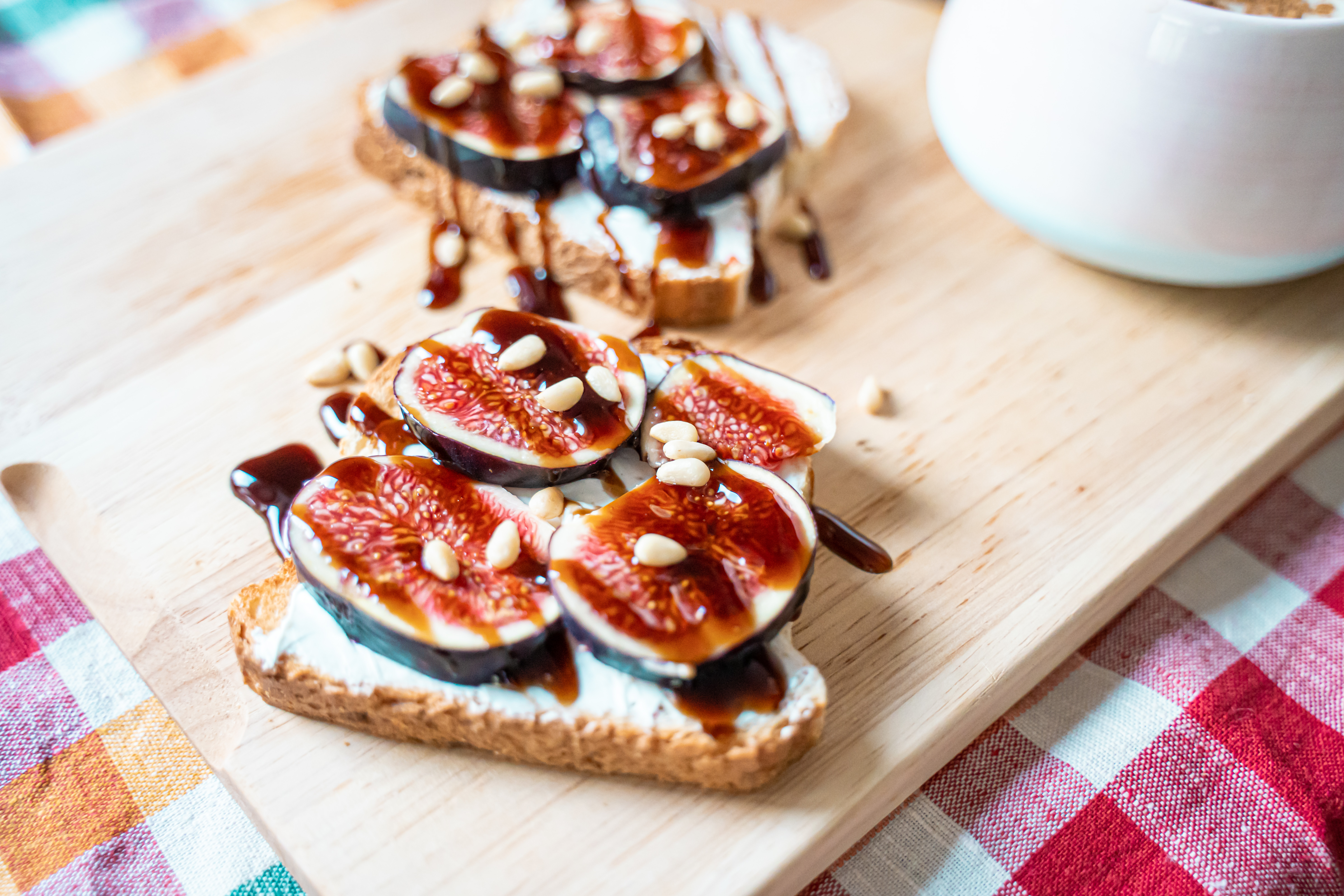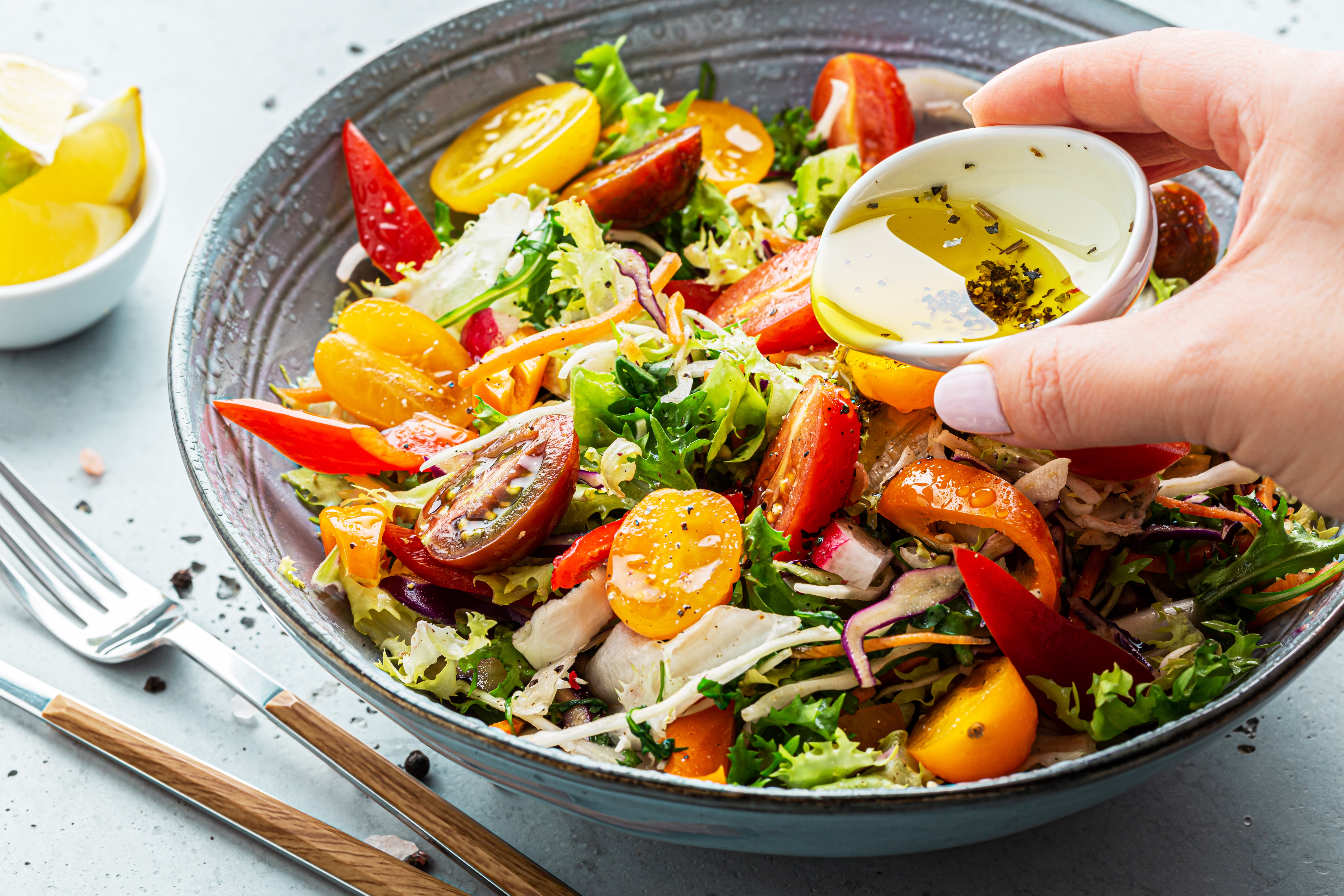Free digital copy
Get Speciality Food magazine delivered to your inbox FREE
Get your free copy
Salt, pepper, oil, vinegar. What would we do without them? Alongside herbs and spices, they’re the absolute backbones of the kitchen, bringing everything we cook to life.
We know, anecdotally, that today’s shopper is happy to pay more for what they drizzle over their salads, douse their chips in, or use for dunking bread. Dressings, oils and vinegars are booming!
Olive oil is a case in point. Although prices have almost doubled in recent years due to harvest issues across the Mediterranean, consumers (retailers and brands say) are prepared to shell out, so long as the perception of quality, care and sustainability is there.
The same can now be said of vinegars and dressings. Shoppers are voting with their feet, seeking out artisanal, craft made and (very important) UPF-free varieties to tantalise their tastebuds.
And this is where fine food retail can step up to the pantry.
The vinegar category has moved on a great deal as consumers continue to be inspired in myriad ways.
By chefs, keen to demonstrate the versatility of fruit, rice wine, balsamic, sherry, and craft malt vinegars. By the ‘Glucose Goddess’ Jessie Inchauspé, who’s been extolling the virtues of consuming apple cider vinegar before meals to help prevent spikes in blood sugar (with Fortune Business Insights predicting a global 5.7% CAGR in ACV by 2032). And by the trend towards fruit vinegars, which are being stirred into soft drinks and cocktails, and used as glazes and dressings – a touch of blackberry vinegar splashed into the pan with a duck breast at the end of cooking does marvels for any resulting sauce, for example.
A vocal advocate for vinegar is former magazine editor and food writer Andy Harris, who founded the Vinegar Shed shop in London in 2017, having found himself disenchanted by what was available here after years spent living in the USA and Australia.
Andy ventured across Europe, meeting some of the finest makers in the industry – many of whom he now counts as friends.
The beauty of selling vinegars in speciality retail, Andy explains, is bringing the ‘real deal’ to customers, who have by and large only previously been exposed to industrially made versions found in supermarkets.
There’s so much more to discover, he adds. “Particularly with wine vinegars. There are four types; fruit flavoured, where they turn fruit into wine and turn that wine into vinegar; macerated vinegars where fruits are combined with the vinegar and other ingredients to get an intense flavour; rice wine vinegar from Asia; and coconut vinegar from around the Philippines, Pacific and Caribbean. Whichever country you go to, there will be some sort of wine vinegar used in their cuisine.”
What’s happened in the last 20 years, he thinks, is everyone’s become “obsessed with using balsamic for drizzling every which way”.
“Their perception was malt vinegar for fish and chips, maybe a bit of red wine vinegar to make a French vinaigrette.” But that perception is changing rapidly.
“That’s why I wanted to introduce people to more exciting vinegars, using different grape varieties and ageing processes. These are not ingredients that should sit in the back of your cupboard for occasional use. You can cook so many things with vinegar. So, if I’m making a stew, I might add vinegar as well as wine. And I have a saffron vinegar which is perfect to splash into a gazpacho, or drizzle on fried eggs too!”

Womersley Foods, which produces all-natural fruit and herb-infused vinegars in small batches, has certainly seen a surge of interest in what the team makes, says spokesperson Labaika Ashiru. “As more people get creative in the kitchen and seek out products that deliver both taste and versatility, our vinegars tick all the boxes. They offer an easy way to bring big flavour without fuss, and they appeal to a wide range of dietary preferences,” he explains. “We think the rise in home cooking, a focus on health-conscious choices, and the push for sustainable, quality ingredients all play a part.”
The brand’s Raspberry Vinegar is a longtime customer favourite and what he calls Womersley’s most iconic flavour, alongside Lime, Black Pepper & Lavendar.
Flavoured varieties should be considered by all speciality retailers looking to capture the imagination of their food savvy, curious customers. And they’re no longer a niche or novelty. “They’re a staple,” Labaika adds. “They’re not just condiments – they’re conversation starters. They are the surprisingly delicious and versatile ingredients you didn’t know you needed in your kitchen until now.”
Create a stir amongst new and regular customers by demonstrating the beauty of these products in store. Show how fruity vinegars can be twirled with sparkling water and ice to make a refreshing shrub drink, how they can make an easy glaze or marinade, or even a quick dessert. “Raspberry vinegar over strawberries or mixed into a compote is a gamechanger,” says Labaika. “And if you haven’t tried our vinegars with cheese, you’re missing out!”
Andy loves fruit vinegars too – especially prune vinegar, which his customers adore. “It’s thick and treacly like balsamic, and that’s amazing over vanilla ice cream.
“But also think of using it for classic French pork and prune dishes. Or mandarin vinegar as a drink or in sweet and sour pork or chicken!”

When you’re choosing balsamic vinegar, ask questions, Andy says. “The real stuff is aged in barrels and can only be made with two types of allowed grape – Trebbiano being the main one. That’s cooked into a must in a big copper cauldron, then put into a battery of different sized barrels and aged. As it gets older the consistency gets more syrupy. Very much the more you pay for it, the better quality you get.”
As a guide, PDO (Protected Designation of Origin) is considered the creme de la creme, being crafted exclusively in the Modena province of Italy, aged for a minimum of 12 years. PGI or IGP (Protected Geographical Indication) can be made in the broader Modena region with cooked must and added wine vinegar, and a minimum ageing of 60 days. There is a place for both types, Andy says, to reach a wide range of pockets.
Balsamic vinegar is a category Cottage Delight has seen go from strength-to-strength since the brand’s wholesale arm took on exclusive distribution of Italian maker Ponti’s products in the UK independent sector.
“They’ve got 99% brand awareness in Italy,” explains Cottage Delight marketing lead, Nicki Wedgewood, adding that the vinegars and antipasti from this range are proving popular with UK customers already. “They’re a B Corp, and are all about provenance, authenticity and quality. Everything is very environmentally friendly, and there are no additives or added sugar. Their real focus is bringing out flavours,” she adds.
The range includes balsamic and fig balsamic glazes that are “so rich and sticky” according to Nicki, who says they’re often called the ‘Italian ketchup’, so ubiquitous are they in family homes. “They can be used the traditional way, or make lovely drizzles on ice cream.”
Three balsamic vinegars, ranging from 12 months to three years, are included in the new offering too. “The packaging is very premium and authentically Italian,” says Nicki, who thinks they’re ideal for gifting and hamper ranges. “We like their unique labelling system, which highlights the maturity, grape must and density to make them easier for shoppers to understand. Each of the vinegars has IGP accreditation, which Nicki says is an important signifier of excellence for consumers. “Foodie customers want the best of the best, something with provenance and that feel of quality behind it.”
Also delving into the balsamic world is The Garlic Farm, which launched Black Garlic Balsamic Vinegar and Smoked Garlic Balsamic Vinegar at the end of last year as a creative solution to food waste, steeping ‘imperfect’ cloves for a rich, intense finish.
While there will always be home cooks who like to stir up their own concoctions for salads, Mintel’s last report on the condiments and dressings categories in 2023 showed a whopping 96% of households had at least one ready prepared product in their wheelhouse. Add to that the 42% who said they’d be willing to pay more for a better-for-you-version, and the 43% who thought premium condiments and dressings made a meal feel more special, and you’ve got quite the captive audience.
Barnes Edwards, director of The Garlic Farm which owns Wild Island dressings, says the figures tally with what they’ve found – that there’s a trend towards flavouring up whole foods, while keeping an eye on health claims. Artisan “dressings, oils and vinegars tend to be relatively healthy” he says, adding that they’re great for livening up summer salads, elevating and adding depth to even the simplest of dishes.
“Attractively packed dressings also make great host gifts for when a bottle of wine isn’t appropriate,” Barnes adds, saying that any good dressing worth its salt is made with fresh ingredients and punchy flavours.
In the Wild Island range, Barnes says he’s noticing a buzz around the more unusual flavour combinations right now, such as Spiced Fig Balsamic. This oil-free dressing and dip not only clings beautifully to leaves, but also serves as a flavoursome marinade and glaze at BBQ time, bringing sweetness, a touch of tartness, and warmth to whatever it touches.
“Our oils and vinegars use fresh ingredients and they are packed full of flavour,” Barnes continues, saying he thinks there’s some exciting innovation in the category, with customers influenced not only by quality, but by provenance and flavour too.”
When it comes to flavour, Nicki says every bottle of dressing should do what it says on the label. Cottage Delight has four products in its range, and each one really packs a punch. “Our Acacia Honey & Mustard Dressing has to pull out that honey flavour. It contains 18% honey in the recipe and that’s paired with a lovely Dijon mustard. It’s a wonderful creamy, yellowy colour which stands out on the shelf. People really love that. In the Roast Garlic & Red Pepper Dressing, the garlic gives a sweet, almost nutty flavour. Once people try that, they will buy it again. It goes with so many things, like in pasta or over pizza. These are flavours that encourage people to experiment a bit. That’s what we’re all about as a brand.”
Although taste is king, Nicki says shelf appeal is just as important when it comes to dressings. “With our range, the colours are vivid and bold, and we’ve got feedback from the trade that that’s a massive thing for them. Customers notice our products! In spring and summer, everyone’s thinking ‘let’s have a lovely salad for lunch’ and these products will catch their eye.”
Imperative to clinching extra sales, Nicki adds, is displaying your dressings, oils and vinegars alongside barbecue and picnic options, with inspirational cooking suggestions to capture shoppers’ imaginations and get them thinking about all the wonderful things they can create in the kitchen over the warmer months.
Andy Harris of Vinegar Shed shares his advice for stocking and selling premium vinegars
1. Be aware with what you can do with your vinegars. Do tastings, and talk to people about how they can go beyond salad dressings.
2. Make sure you offer ‘good’, ‘better’ and ‘best’ options across a range of price points.
3. Look out for sherry vinegar labelled as PX which is made with the sun-ripened grapes. It’s much denser in colour and that, like balsamic, is good with desserts and cheeses.
4. Always have red wine vinegar, but try to move onto other artisan wine vinegars too, like a Muscat or Banyuls.
5. Think of ways you can cross sell vinegars. For example, stocking ice cream to go with raspberry or prune vinegars. I love getting people to experiment, and having them come back in to say, ‘that was really nice’.